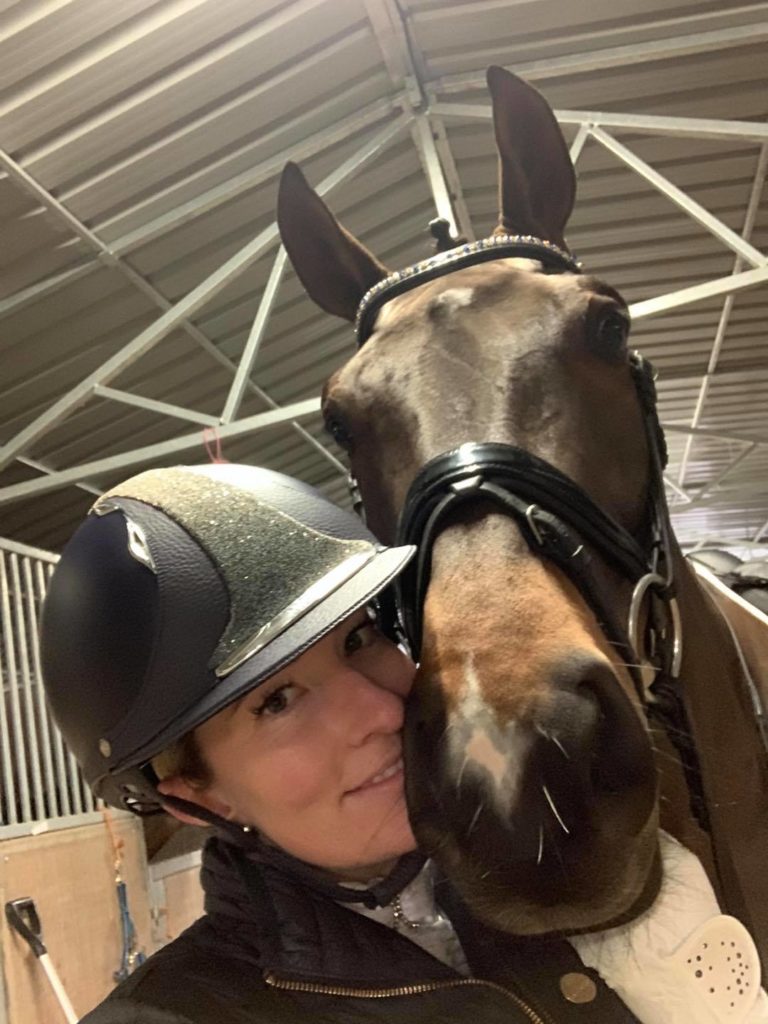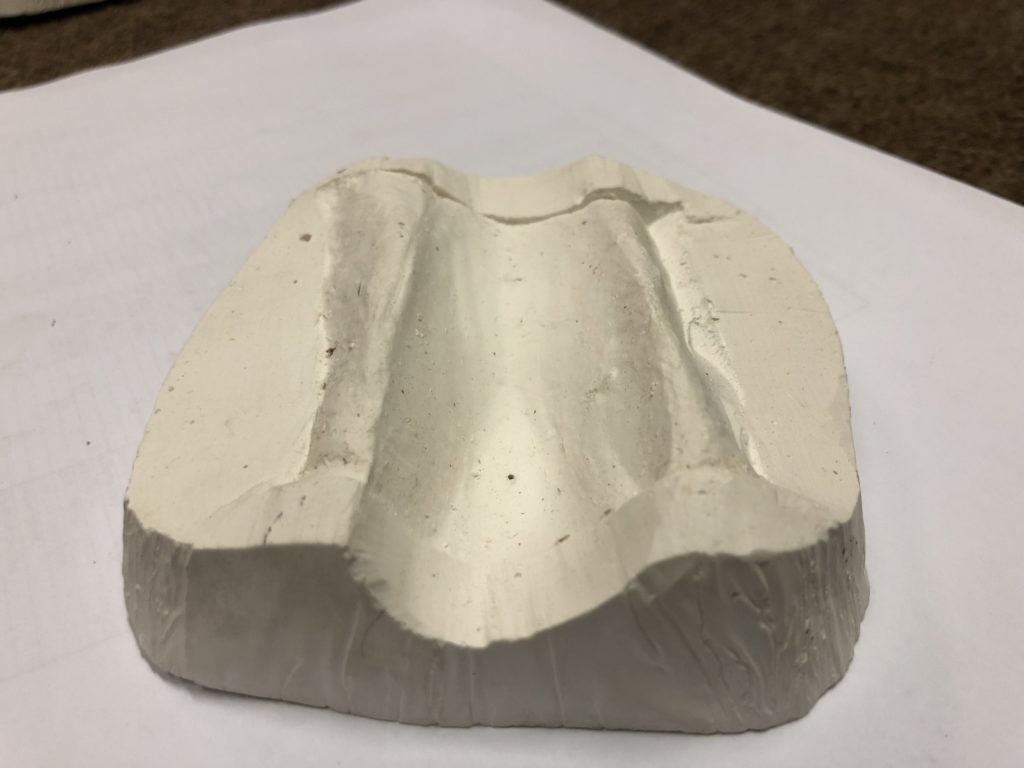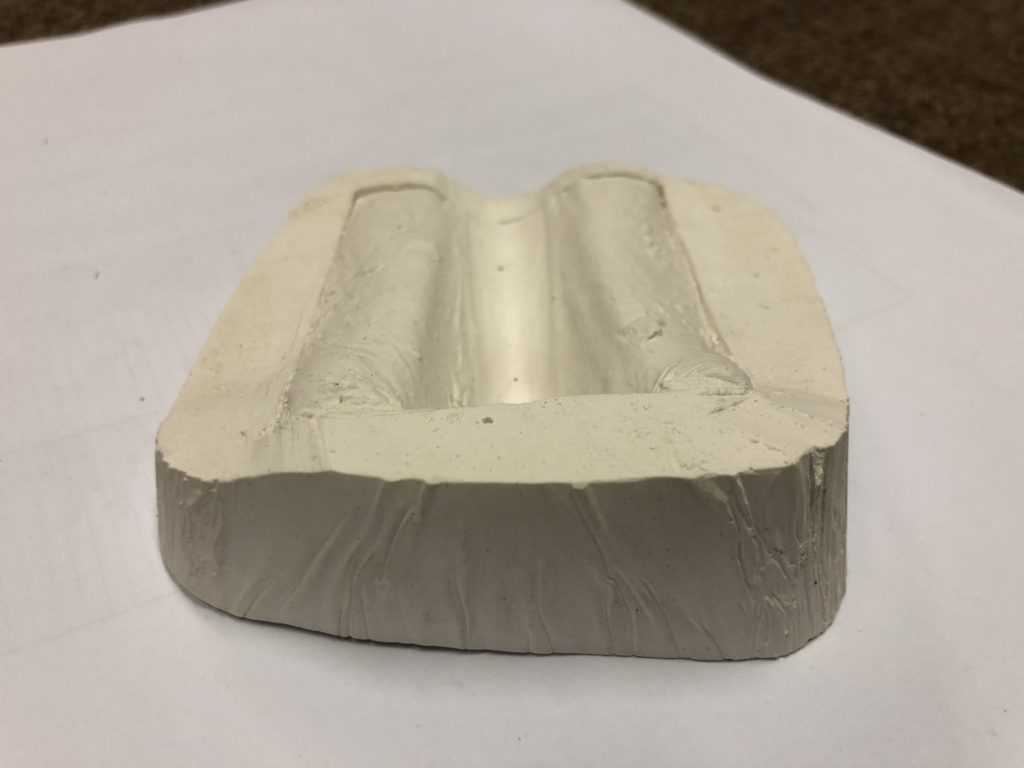Bombers Ambassador Sue Gilliatt, the team’s resident mouth moulding specialist, was recently quoted in the UK’s Horse & Hound magazine, talking about the benefits of using mouth moulding in the bitting assessment process.

Sue Gilliatt, centre, reviewing the results of an EDT assessment at an equine mouth moulding session.
 British dressage rider Jessica Dunn, pictured right, told the magazine that the mouth moulding process, as coordinated by Sue, and performed by an equine dental technician (EDT), had greatly aided the harmonious communication and comfort encountered two of Jess’s top rides.
British dressage rider Jessica Dunn, pictured right, told the magazine that the mouth moulding process, as coordinated by Sue, and performed by an equine dental technician (EDT), had greatly aided the harmonious communication and comfort encountered two of Jess’s top rides.
Describing one horse as being ‘at risk of being described as a tricky mare’, Jess explained that the mouth moulds showed that the bars of the mare’s mouth were ‘like a knife edge’. “Her mouth measured much smaller than anticipated,” Jess explained, adding that “Sue has a wealth of experience.”
All about mouth moulding
The process aims to accurately fit a bit mouthpiece to the horse’s mouth conformation, using dental impression material that creates a replica of the horse’s bars, where the bit mouthpiece sits. During the process, an EDT opens the horse’s mouth up.
Sue then moulds the horse’s bars, using high-detail impression material set in Plaster of Paris. Then, a bit is collaboratively chosen.
What are the bars?
Understanding our individual horses’ bar conformation is key to bitting successfully. But what exactly are the bars? Looking from the side, they are situated at the area that appears as the ‘empty space’ or interdental area between the horse’s incisor and molar teeth.
“The bars are sensitive areas of soft gum tissue; there’s no muscle. There are two bars below the tongue in the lower equine jaw, set around 2-4 cm apart, and they’re roughly the width and shape of a human finger. They are essentially the bar of the mandible bone, and the dimensions or anatomical proportions actually change as the horse gets older,” Sue explains.

Above – thinner, sharper equine bars

Above – wider equine bars
There’s only around 2-3 mm of soft tissue on top of the mandible bone, and the shape of the bars differs according to breed, e.g. warmblooded equines tend to have thinner bars than their cold-blooded cousins. Wider bars are preferable, as they allow for more tongue relief when bitting the horse.
Conversely, if horse has thin, ‘sharper’ bars, the contact area between the bit and the mouth is smaller, meaning the horse may be more sensitive to the bit.
Our horse’s mouth confirmation dictates mouth pressure
Sue, pictured top left with British dressage rider Luke Baber Davies, says the gap between the bars provides a recess for the tongue to escape bit pressure. “As this becomes narrower, more of the tongue is forced to take the primary bit pressure,” she explains.
“Our horse’s mouth confirmation dictates mouth pressure, even before we have chosen our bit! Add into the equation asymmetry of the bar height, which can obviously create uneven contact with the rider, as they ‘feel’ the reins, (e.g. if one bar is higher than the other), as well as elements like large tongues, fleshy lips and small jaws, and it becomes clear that successful bitting has to be tailored to equine mouth confirmation,” Sue adds.
Sue is presenting at the International Association of Veterinary Rehabilitation and Physical therapy (IAVRPT)’s International Symposium, which runs from 18th-20th August 2022 in Cambridge, UK. READ MORE HERE.
#bombersbits #bombersbluebits #teambombers #bombersbitsbringbalance



